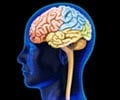A sensory experience is associated either with other stimuli or with a certain type of behaviour in the process of learning.

The results of their research into memory in silent neurons can be found in the latest edition of Nature. Learning and memory are governed by a mechanism of sustainable synaptic strengthening. When we embark on a learning experience, our brain associates a sensory experience either with other stimuli or with a certain form of behaviour. The neurons in the cerebral cortex responsible for ensuring the transmission of the relevant information, then modify the synaptic connections that they have with other neurons. This is the very arrangement that subsequently enables the brain to optimize the way information is processed when it is met again, as well as predicting its consequences.
Neuroscientists typically induce electrical pulses in the neurons artificially in order to perform research on synaptic mechanisms. The neuroscientists from UNIGE, however, chose a different approach in their attempt to discover what happens naturally in the neurons when they receive sensory stimuli. They observed the cerebral cortices of mice whose whiskers were repeatedly stimulated mechanically without an artificially-induced electrical pulse. The rodents use their whiskers as a sensor for navigating and interacting; they are, therefore, a key element for perception in mice.
An extremely low signal is enough By observing these natural stimuli, professor Holtmaat's team was able to demonstrate that sensory stimulus alone can generate long-term synaptic strengthening without the neuron discharging either an induced or natural electrical pulse. As a result – and contrary to what was previously believed – the synapses will be strengthened even when the neurons involved in a stimulus remain silent. In addition, if the sensory stimulation lasts over time, the synapses become so strong that the neuron in turn is activated and becomes fully engaged in the neural network. Once activated, the neuron can then further strengthen the synapses in a forwards and backwards movement. These findings could solve the brain's "What came first?" mystery, as they make it possible to examine all the synaptic pathways that contribute to memory, rather than focusing on whether it is the synapsis or the neuron that activates the other.
The entire brain is mobilized A second discovery lay in store for the researchers. During the same experiment, they were also able to establish that the stimuli that were most effective in strengthening the synapses came from secondary, non-cortical brain regions rather than major cortical pathways (which convey actual sensory information). Accordingly, storing information would simply require the co-activation of several synaptic pathways in the neuron, even if the latter remains silent. These findings may also have important implications both for the way we understand learning mechanisms and for therapeutic possibilities, in particular for rehabilitation following a stroke or in neurodegenerative disorders. As professor Holtmaat explains: "It is possible that sensory stimulation, when combined with another activity (motor activity, for example), works better for strengthening synaptic connections". The professor concludes: "In the context of therapy, you could combine two different stimuli as a way of enhancing the effectiveness."
Source-Eurekalert









